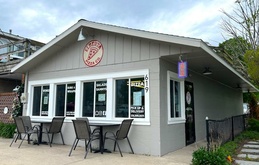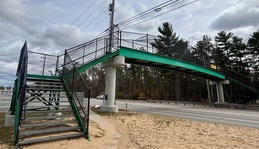The History of TIF 97
Guest Opinion
By Jim Carruthers | June 15, 2024
Recently there’s been a lot of talk about Tax Increment Financing, or TIF, as it relates to downtown parking, infrastructure upgrades along the Boardman River, and the Rotary Square. Locally the TIF has done a good job with redeveloping our core downtown neighborhood as planned, but other neighborhoods in Traverse City now need the increased revenues promised by the TIF when first adopted.
TIF is a tool developed in the late 1950s as a federal urban renewal program. The intent was to help depressed urban areas combat blight by incentivizing developers with upfront subsidies based on the future taxable value of projects that would support the redevelopment and revitalization of blighted areas in the urban core. In turn, over the term of the TIF, the assessed values on downtown properties would increase, providing increased future revenues for the city.
A TIF is negotiated for a set length of time. In Traverse City, TIF 97 was set for 30 years (until 2027), at which point the incentives/subsidies for redevelopment downtown would end. The increased taxable values/property taxes would return to the city, bringing millions to the city’s general fund. These monies would then support projects all over town. It was a way to get rid of blight and redevelop the downtown while banking value in increased property assessments. When the TIF ends, the Downtown Development Authority (DDA) could pat themselves on the back for a job well done.
To make it all work, area taxing jurisdictions like Traverse Area District Library, BATA, Northwestern Michigan College, Commission on Aging, Veterans, Grand Traverse County, etc. would also provide revenues. Some might say it was ingenious, while others point out it was all just a shell game to maneuver public subsidy into developers’ pockets. However it is viewed, ultimately the city wins, because eventually the increase in assessed values on the redeveloped property downtown would bring millions of dollars to the city’s general fund and budget.
In a recent Ticker article, former DDA CEO Jean Derenzy stated, “I didn’t even remember that parking was the big focus of why the TIF was needed. I remember there needing to be a focus on investments for the infrastructure downtown.” She is correct. TIF 97 was about redevelopment of blighted urban areas and upgrades to public infrastructure. However, during the planning of the TIF, property owners and developers wanted the highest and best uses on their property (profits), and the responsibility for parking cars was instead placed on the city. The DDA plan did call for parking decks, but they were not guaranteed and were just a placeholder in the plan in case more parking was needed.
The original TIF plan’s vision was created by a citizen advisory committee made up of downtown property owners, business owners, and TC residents. The plan was adopted by the DDA with its goals to: preserve downtown’s small town character; improve the pedestrian experience; make better use of the land; and maintain historic building patterns.
The defined term of the TIF was the main selling point in order to convince people to support this concept and to get other taxing jurisdictions to agree to the tax diversion for a limited time. It was not a forever tax capture. At the end of the plan, debts would be paid off, and the remaining diverted taxes would go back to the city’s general fund and the other taxing jurisdictions.
That was how Bryan Crough (past executive director of the DDA) sold the idea, plain and simple. He even stated that the DDA was not planning on extending the TIF in the future as it was the promise made to the citizens to help convince them that this tax capture was not a forever tool. He supported this because the increased revenues from future development would ultimately be returned to the city and used throughout the entire city, and the other taxing jurisdictions would then be made whole once again.
In 2008, the city created a citizen-based “audit” of city operations to reaffirm the goals of the city called the Citizens Operational & Financial Analysis Committee (COFAC). A subcommittee was tasked with reviewing the TIF plans. Their final recommendation states “it is the consensus of the subcommittee that city tax payers will be more accepting of the TIF concept of financing if there are assurances that debts incurred will be paid on schedule and the TIFs be allowed to expire with future evaluation of increased tax base to be distributed to the city taxpayer/city general fund at large as IMPLICITLY promised when each TIF was created.” The subcommittee also strongly discouraged amendments to, and expansion of, existing TIF programs.
TIF was never intended to be an ongoing revenue stream. The DDA and City Commission need to remember what was promised and move on while acknowledging past committee efforts and audits. Most of all, they need to remember that TIF 97 was originally intended as a temporary tool with an end date.
Jim Carruthers is the former mayor of Traverse City, as well as a former city commissioner and DDA board member.
Trending

A Year-Round Pizza Joint in Elberta
When we talk about fresh, house-made, and hand-crafted at a pizzeria, that means fresh dough daily, in-house sauces, hand-gr… Read More >>
Lost & Hound
Americans spend over $100 billion annually on their pets and pet-related products and services. With that kind of investment… Read More >>
TC State Park Construction: September Update
The $8.5 million Keith J. Charters Traverse City State Park renovation will become more visible starting this week. Per the … Read More >>


